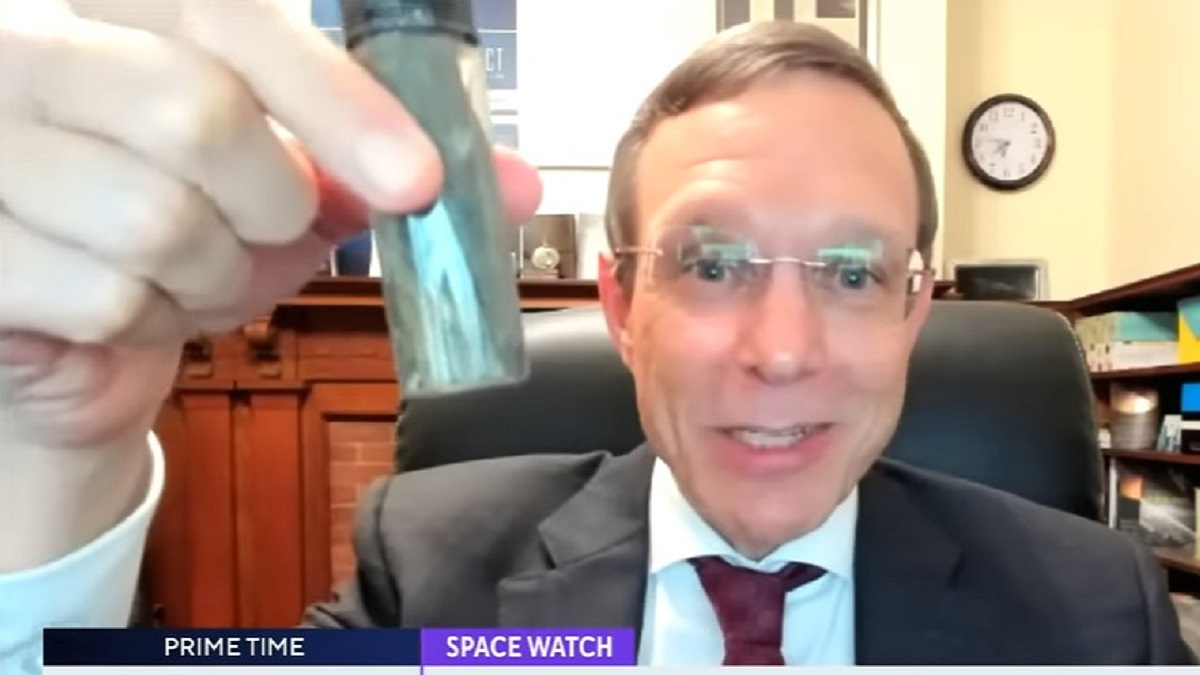
Harvard astrophysicist Avi Loeb said humanity could find out within a month whether extraterrestrial intelligence exists. Pic credit: CBS News/YouTube
Harvard astrophysicist Avi Loeb said the world could learn within a month whether the material he recovered from the Pacific Ocean is debris from an alien spacecraft or fragments of a meteorite.
The statement comes after Loeb announced in June that he led a search mission that recovered from the ocean floor fragments of an object, dubbed Interstellar Meteor 1 (IM1), that entered the atmosphere in 2014. The object disintegrated in the lower atmosphere and fell into the Pacific.
Loeb said that since they recovered the fragments from the floor of the Pacific off the coast of Manus Island, Papua New Guinea, experts have been busy analyzing them to determine their chemical and isotopic compositions.
According to Loeb, analysis by experts from the US, Germany, and Papua New Guinea would help his team gain an insight into the origin and nature of the material.
The Frank B. Baird Jr. Professor of Science at Harvard University told the Daily Star that he expected to receive the analysis results within a month.
Loeb recovered 50 microscopic spherules from the Pacific Ocean
Loeb first announced that his team recovered microscopic spherules from the Pacific Ocean floor on June 21. Researchers believe the spherules are debris from IM1.
IM1 entered the atmosphere on January 8, 2014, and disintegrated on impact with the atmosphere. The debris fell into the Pacific Ocean.
Loeb and his team recovered the debris by dragging a magnetic device on the ocean floor along IM1’s likely path after it entered the atmosphere.
The debris consisted of 50 spherules or tiny microscopic particles about 0.3 millimeters in size, and with a combined weight of 35 milligrams.
Microscopic means you can only see it under a microscope.
IM1 could be an interstellar meteor or debris from alien craft
Although scientists believed the object was an interstellar meteor, Loeb suggested it could be an artificial object, such as an alien spacecraft built by an alien civilization.
He said that IM1’s unusually high speed and trajectory indicated it was an interstellar object, such as a meteor from outside our solar system.
However, the anomalous strength and composition suggested it could also be an artificial object, such as an interstellar probe or spacecraft.
He explained that preliminary analysis of the spherules showed they consisted of iron and smaller quantities of magnesium and titanium. The composition suggested that IM1 consisted of an alloy fabricated by a technological civilization.
IM1 could be first confirmed product of alien tech to fall into human hands
They sent the spherule for further analysis because the preliminary one did not provide conclusive evidence.
Loeb said that the results of further analysis, expected within a month, could provide insight into whether IM1 is a natural space object or of technological (artificial) origin.
“The reason for considering an artificial origin for this half-meter-sized object is that it was tougher in material strength than all other 272 meteors in the CNEOS catalog of NASA,” he said.
“Given IM1’s high speed and anomalous material strength, its source must have been a natural environment different from the solar system or an extraterrestrial technological civilization,” the astrophysicist added.
He added that if the results show that it was a technological object of interstellar origin, it would be the first confirmed product of alien technology to fall into human hands.
Papua New Guinea accused Loeb of taking fragments without permission
After Loeb announced the recovery of the fragments from off the coast of Papua New Guinea, officials from the country accused him of taking them without permission, the Sunday Times reported.
George Penua Polon, the deputy administrator of the Manus Province, said the team “cheated” their country by not going through the official authorization process.
They allegedly did not contact the Papuan institutions responsible for supervising foreign researchers. They also allegedly traveled to the country on business visas instead of special exemption visas expected of visiting foreign researchers.
